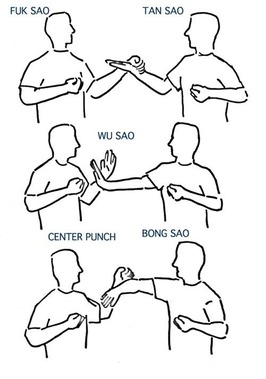Xue Sheng
All weight is underside
Forgive me if I have the terminology wrong but I will try and explain this as best I can
I have been working with a group of Wing Chun guys and the other day the guy who is the teacher was not there and the guy who wants to be the teacher was and I was doing Chi Sau with him and he continually told me I was not engaged when we started. It was a Fuk Sao/Tan Sao start
He continued to tell me to put more pressure in my fuk sao or my tan sao so he could feel that I was engaged. Now from a Taiji perspective as soon as I touched him I was engaged and he was asking for way too much pressure from me. His point was without that he could not feel my intent.
Is this what I am supposed to do in Chi Sau?
And I will be honest here; if this is how it is I can't do it. It would require me to tense up and use way to much force and I would not be able to flow, move, stick or follow. It would become a test of strength rather quickly or it gives me a rather large advantage because I would need to do is relax and then he is done and has no idea what my intent is.
I should also say I have never heard this from the guy who is the actual teacher there when I did Chi Sau with him. Doing Chi Sau with him I see a lot of similarities of underlying principles between Wing Chun Chi Sau and Taiji Tui Shao.
Note: See the top picture, that is the position I am talking about

I have been working with a group of Wing Chun guys and the other day the guy who is the teacher was not there and the guy who wants to be the teacher was and I was doing Chi Sau with him and he continually told me I was not engaged when we started. It was a Fuk Sao/Tan Sao start
He continued to tell me to put more pressure in my fuk sao or my tan sao so he could feel that I was engaged. Now from a Taiji perspective as soon as I touched him I was engaged and he was asking for way too much pressure from me. His point was without that he could not feel my intent.
Is this what I am supposed to do in Chi Sau?
And I will be honest here; if this is how it is I can't do it. It would require me to tense up and use way to much force and I would not be able to flow, move, stick or follow. It would become a test of strength rather quickly or it gives me a rather large advantage because I would need to do is relax and then he is done and has no idea what my intent is.
I should also say I have never heard this from the guy who is the actual teacher there when I did Chi Sau with him. Doing Chi Sau with him I see a lot of similarities of underlying principles between Wing Chun Chi Sau and Taiji Tui Shao.
Note: See the top picture, that is the position I am talking about

